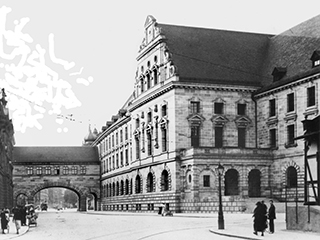Accession books of the Museumsstiftung Post und Telekommunikation: Nuremberg Transport Museum
Reporting period: 1902-1936
Today's Museum of Communication Nuremberg goes back to the Königlich Bayerische Verkehrsmuseum (Royal Bavarian Transport Museum), which opened in 1899 and whose railway exhibition was expanded in 1902 to include a section on the Bavarian postal service and telegraphy. In 1920, the Bavarian postal service lost its independence and the postal department of the transport museum was henceforth supported by the Imperial postal service.
The acquisition books and inventory records of the transport museum are confusing and often duplicate each other. Delivery notes are available for the period from 1902 to 1924, but it is difficult to verify their completeness. Later inventories often refer to the printed ‘Führer durch die Sammlungen des kgl. bayerischen Verkehrsmuseums’ (‘Guide to the Collections of the Royal Bavarian Transport Museum’) from 1907. A comprehensive inventory apparently took place in 1924 in the course of the transition to the German Empire and the opening of the museum building in Lessingstraße. The later so-called ‘Bestandsnachweisungen’ (‘inventory statements’ record the objects in terms of value in the sense of a balance sheet. Often, pre-printed notebooks from the postal service were used, whose column headings are not always appropriate. A number of directories are available in duplicate, for example as a draft or final version. In these cases, only the most complete version is available in digital form.
No more inventory books are available after 1936, probably because Department IV of the Reich Postal Ministry, which had been set up to compensate for the loss of an independent postal administration in Munich, was dissolved in 1934. The postal department of the Nuremberg Transport Museum became a semi-autonomous department of the Reichspostmuseums (Imperial Postal Museum) in Berlin, although it was administered by the Nuremberg regional postal office.
The philatelic holdings comprised an extensive collection of Bavarian postal values, stamp designs and printing blocks, postmarks and stamp cancellations, as well as a collection of letters and envelopes from the pre-stamp period before the introduction of the postage stamp. Added to this was an equally extensive philatelic collection of German Empire stamps, stamps from other German states and non-German stamps. These were recorded separately from the other museum objects in inventories.

